Hope and Imagination
Fallen flower petals, my favorite movie (not Star Wars), and the power of dangerous hope
“...hope is an act of imagination with real-world consequences.”
This is a quote from Krista Tippett in the next episode of OnBeing’s focus on hope for the next several weeks. It is leading into her conversation with adrienne maree brown about the relationship between imagination and hope. I just read her book Emergent Strategy and have also been following MaryAnn McKibben Dana’s reflections on the same book over the last few months. I cannot recommend brown’s work highly enough. Anyway, the conversation in the podcast centers on the relationship between imagination and hope. I cannot commend it highly enough to listen to before reading the rest of this. Here’s the link.
A key thing shared from my listening to the conversation is that we are in an “imagination battle” right now. Imagination can be that which wakes us up in the middle of the night and spirals us down into despair as one thing leads to another leads to another leads to another. At the same time, imagination can spiral up into possibilities. So much of it depends on our life circumstances and also the way that we have come to navigate the world. What direction will we let our imagination follow because imagination doesn’t always follow the pathway of hope.
In the podcast conversation, it was shared that our imaginations may not stretch far enough. It reminded me of a message I shared in my congregation a few weeks ago about a healing story in John 5:1-9. In the story, Jesus asks a man who has been ill for 38 years if he wants to be made well (another translation could also accurately be “do you want to be made whole?”) but the man doesn’t really answer Jesus’ question. Instead he talks about how he is unable to get into the water of the pool nearby in order to be healed. His imagination isn’t able to get beyond what he’s known and experienced. I’m not faulting him here, but just pointing out that his imagination had understandably become limited. And then Jesus gives a really simple response to that, “Get up. Take your mat and walk.” And he does. Jesus’ hope-filled imagination is able to speak into this man’s life.
Regarding practice of this, adrienne maree brown shared to first try to imagine the world that we want to inhabit and then seek to live as if that imagined world is a reality. She rightly points out that there are choices we can make each day around our imagination. Some days we may not be able to make the choices toward this imaginative sense but to try again the next day, or in the next hour, or even ten minutes later. But we have to stir that imagination within ourselves of what can be rather than simply what is.
As she closes the conversation, she quotes author Octavia Butler who said, “there’s nothing new under the sun, but there are new suns.” Butler shared this as a speculative science fiction writer whose works do reflect this imaginative world that she longed for. Her writing of these imaginative stories was one way that she sought to live out these new possibilities. Her stories lifted up new suns that could not only shine within her books but also within our lives as well.
I am currently in Mexico City for the annual gathering of my pastors group (you could call it “clergy camp”) and we are daily working our way through the New Testament letter called Ephesians. There’s a beautiful passage right at the middle where Paul offers a beautiful and powerful prayer for his friends in Ephesus (and speaks to us today). He writes in 3:18-21:
I pray that you may have the power to comprehend, with all the saints, what is the breadth and length and height and depth and to know the love of Christ that surpasses knowledge, so that you may be filled with all the fullness of God.
Now to the One who by the power at work within us is able to accomplish abundantly far more than all we can ask or imagine, to God be glory in the church and in Christ Jesus to all generations, forever and ever.
As I listened to the OnBeing conversation this week and also taking in the conversations that have been shared these last few days with these dear brothers with whom I’ve traveled this ministry life for over 25 years, I got thinking of one of the questions each of us answered when we were ordained as pastors. (Side note - it is also a question asked of every Elder and Deacon who serve in our denomination as well). The question (one of the nine), asks “Will you pray for and seek to serve the people with energy, intelligence, imagination, and love?” (emphasis mine). I adore this question because it is about both seeking and acting. We are seeking for the inspiration to serve with the whole of ourselves - energies, intellect, dreaming, and heart - and also the choosing to act with those same four things. I love the fact that this question is asked of all who are brought into ordained service within the Presbyterian Church.
I saw this imaginative hope on a sidewalk this week. Each morning while I’ve been here with the fellas, I have gone out for a lengthy walk in the neighborhood where we are. The first morning I was out, I noticed these purple flowers on many of the sidewalks.
They were everywhere. But as I looked around, I didn’t see where they had come from. When I saw them on the sidewalk and looked up, I didn’t see a tree that looked as if those were its blooms. The trees might have been the source and all the blooms had fallen but I also got imagining where else they might have come from. Had there been some kind of parade or procession down those streets? Had there been a wedding or some other celebration that took place where these flowers were used? It was fun to imagine a joyful celebration of flowers being carried or thrown as people made their way through the streets. I imagined the colorful outfits, vibrant music, and beautiful community of a group of people coming together marching through the streets of our neighborhood here. Was that what actually happened? I have no idea but I walked those neighborhood streets as if it had been.
So for me, over the next week, I’m going to try to intentionally live into this practice. To go back to Krista Tippett’s initial quote - “hope is an act of imagination with real life consequences” - I love the fact that she uses the word “consequences.” Often when I think of that word, it has a negative sense such as the result of doing something dangerous. And maybe this is dangerous as well. Imaginative hope is dangerous because it says that what we have now doesn’t have to be the final word. In the Shawshank Redemption, Red criticizes his friend Andy for trying to live and share hope in that brutal prison when he says, “Let me tell you something my friend. Hope is a dangerous thing. Hope can drive a man insane.” But Andy continued to imagine something beyond his circumstances and kept him alive in that place. It ensured that the brutality of the prison and of his experience of injustice did not have the final word. And hope led him (and eventually Red) to a place seen “only in my dreams” (Red’s quote) only about 8 hours away from where I am writing this - Zihuatanejo. The movie ends with one of the greatest concluding lines in movie history (in my opinion)...
I hope I can make it across the border.
I hope to see my friend and shake his hand.
I hope the Pacific is as blue as it has been in my dreams.
I hope.
How can you live this dangerous, beautiful, powerful imaginative hope?
Here are a few other photos from our time here thus far - a a stunning paining called, Genesis, the Gift of Life by Miguel Covarrubias and then our time at the Teotihuacan Pyramids on Thursday (including the adventures of a couple of Star Wars minifigures)
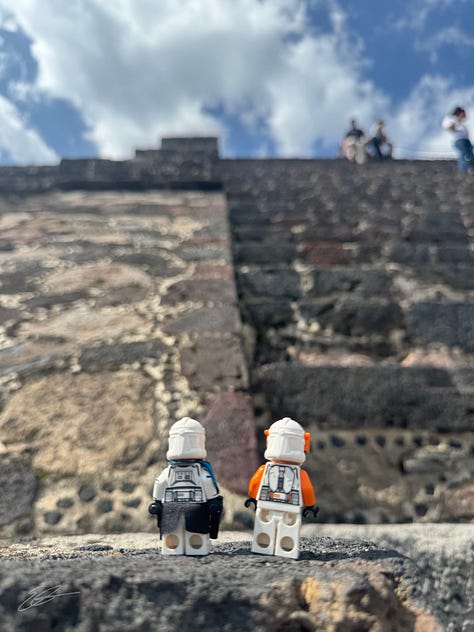
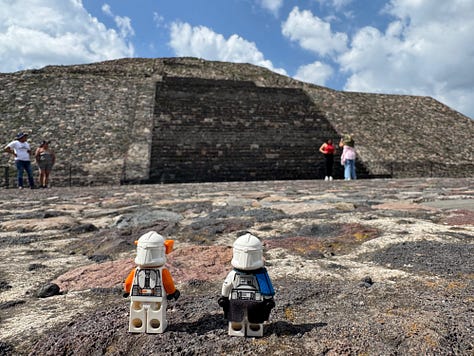
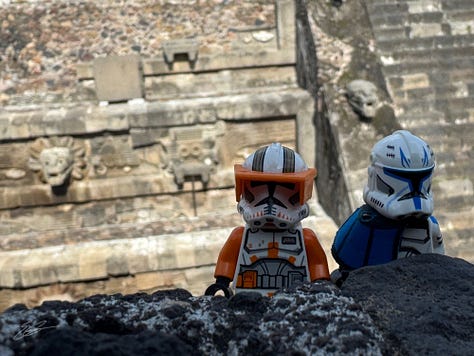
Grace, Peace, Love, Hope, and Joy,
Ed
Tags:


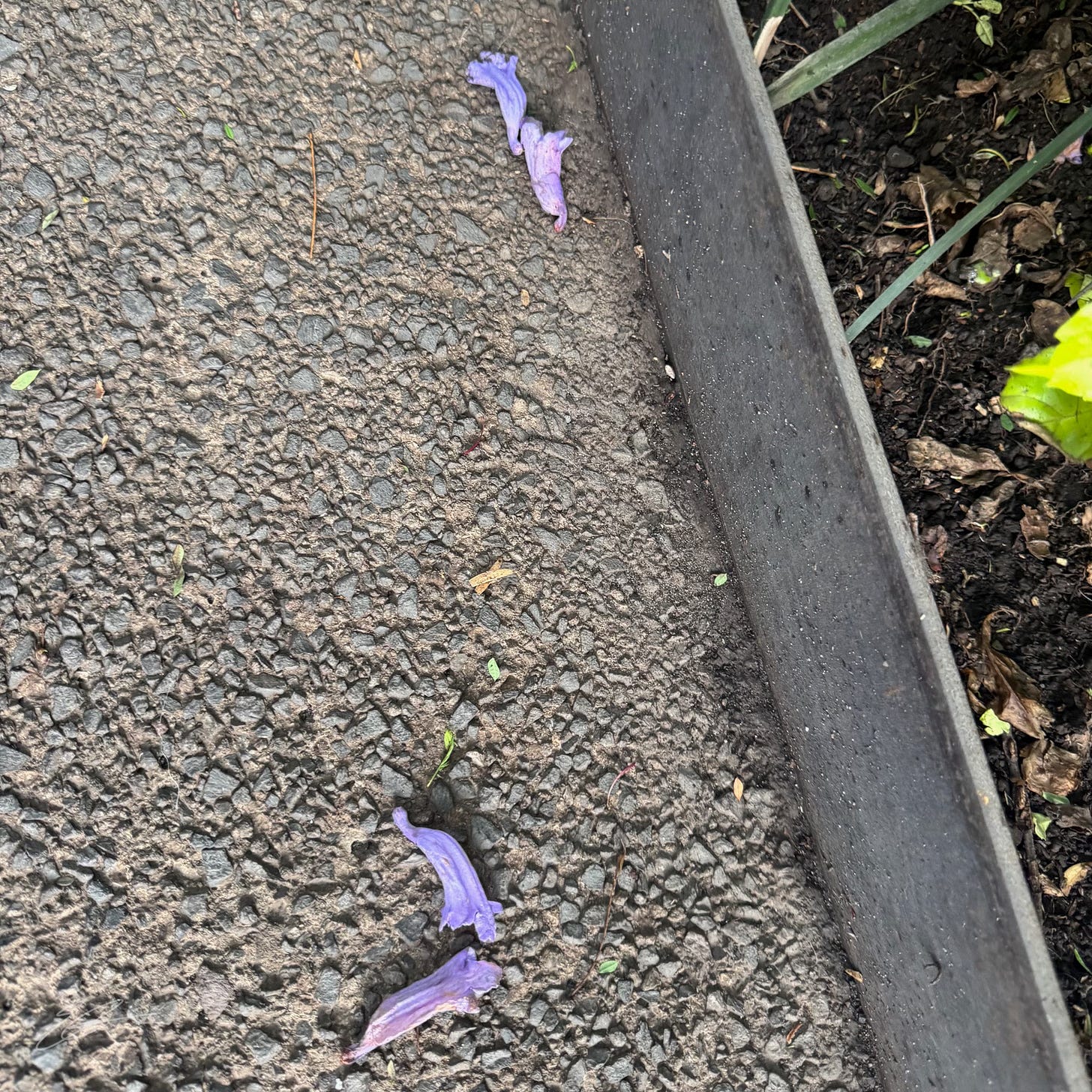

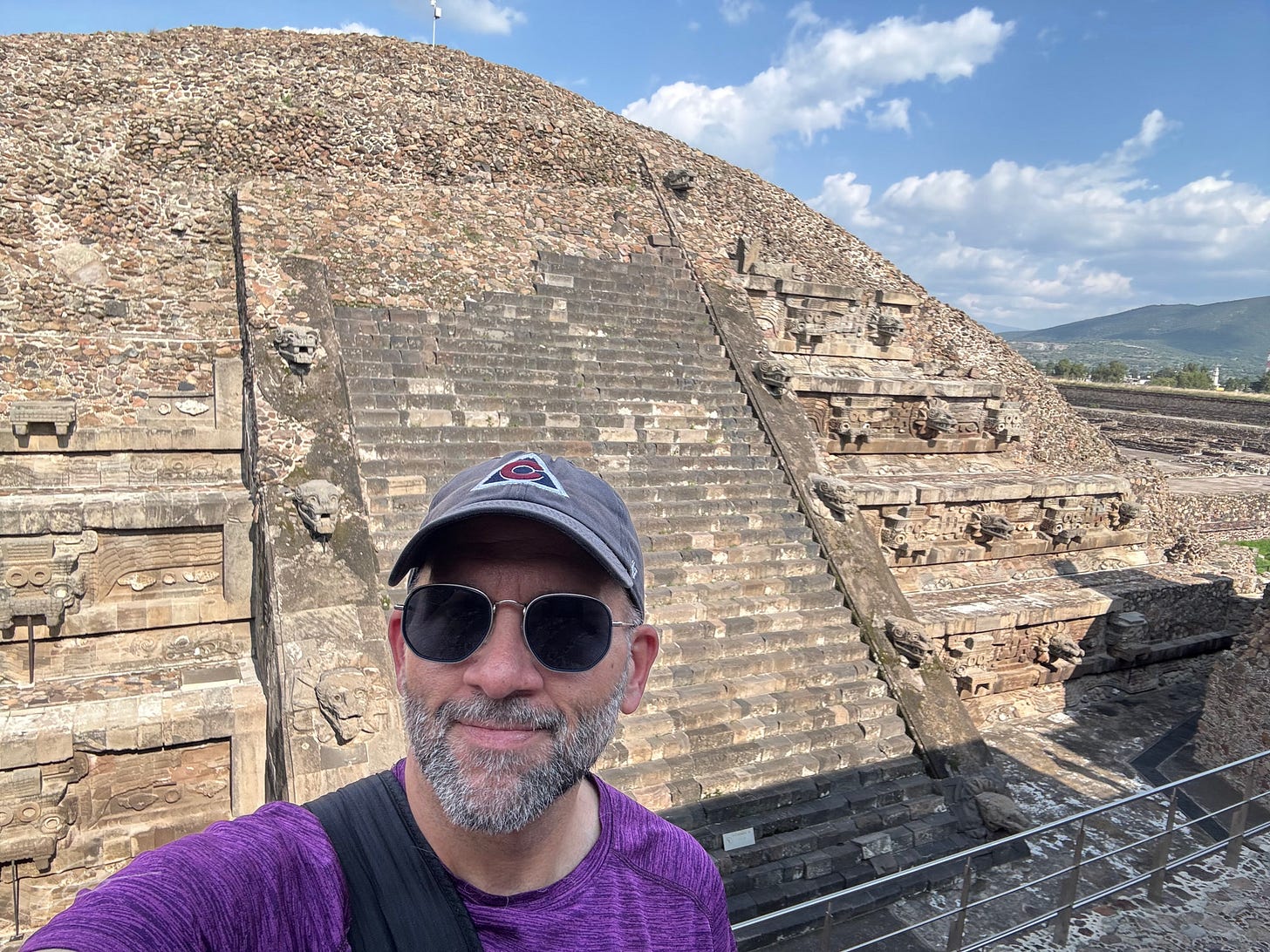
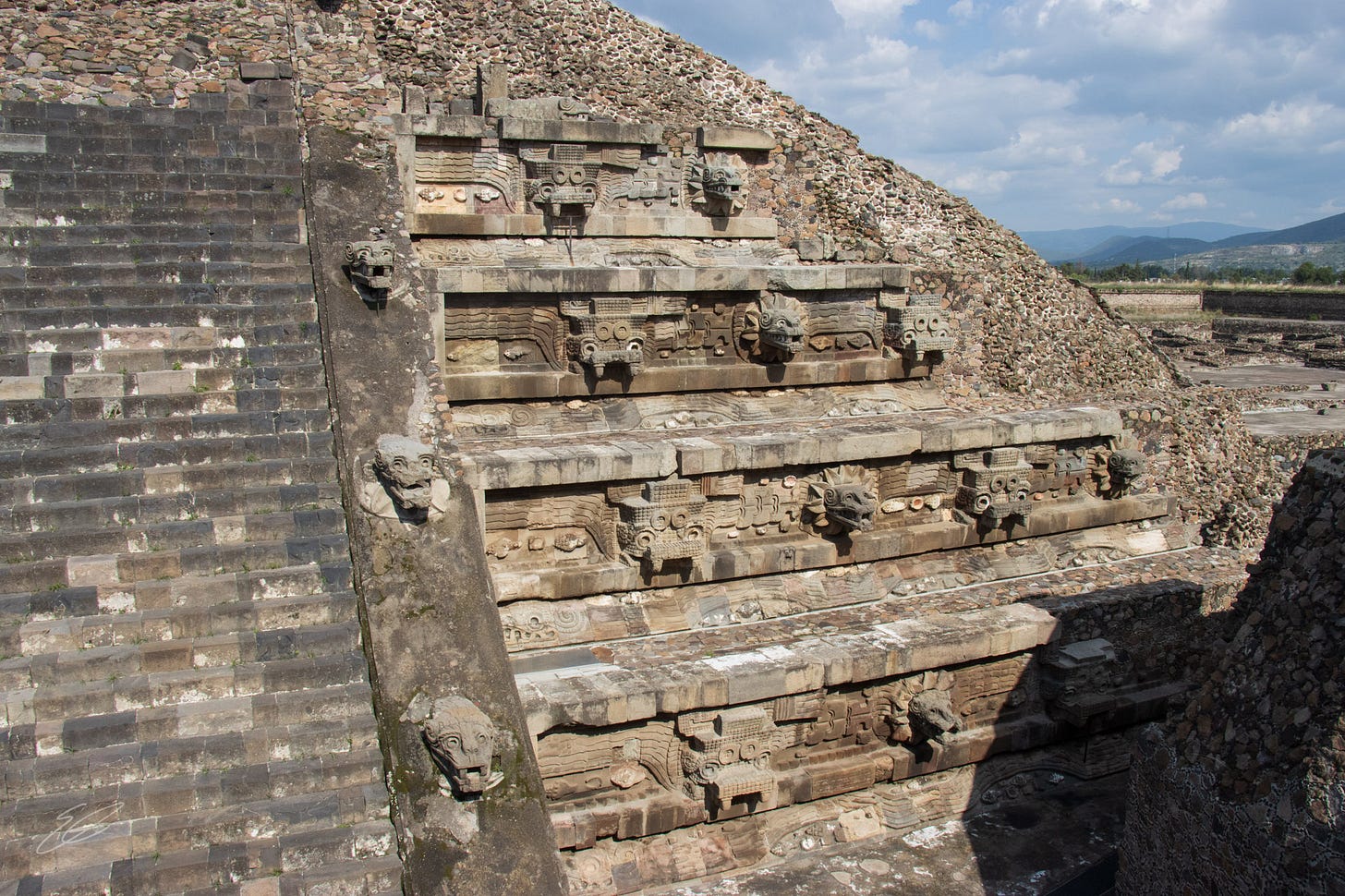
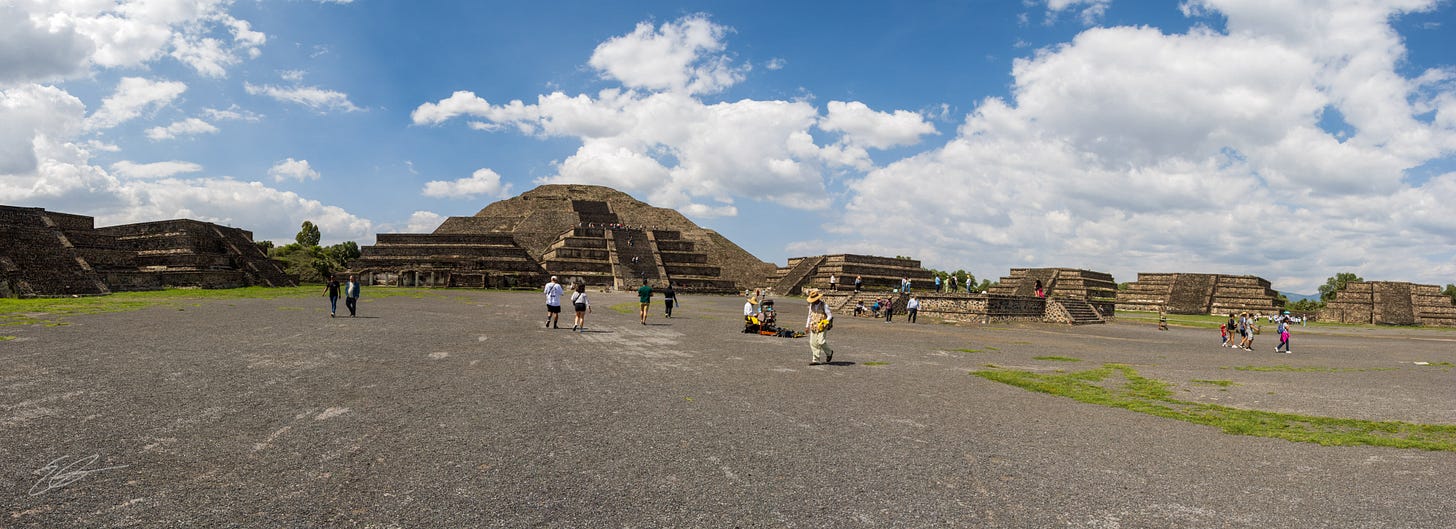
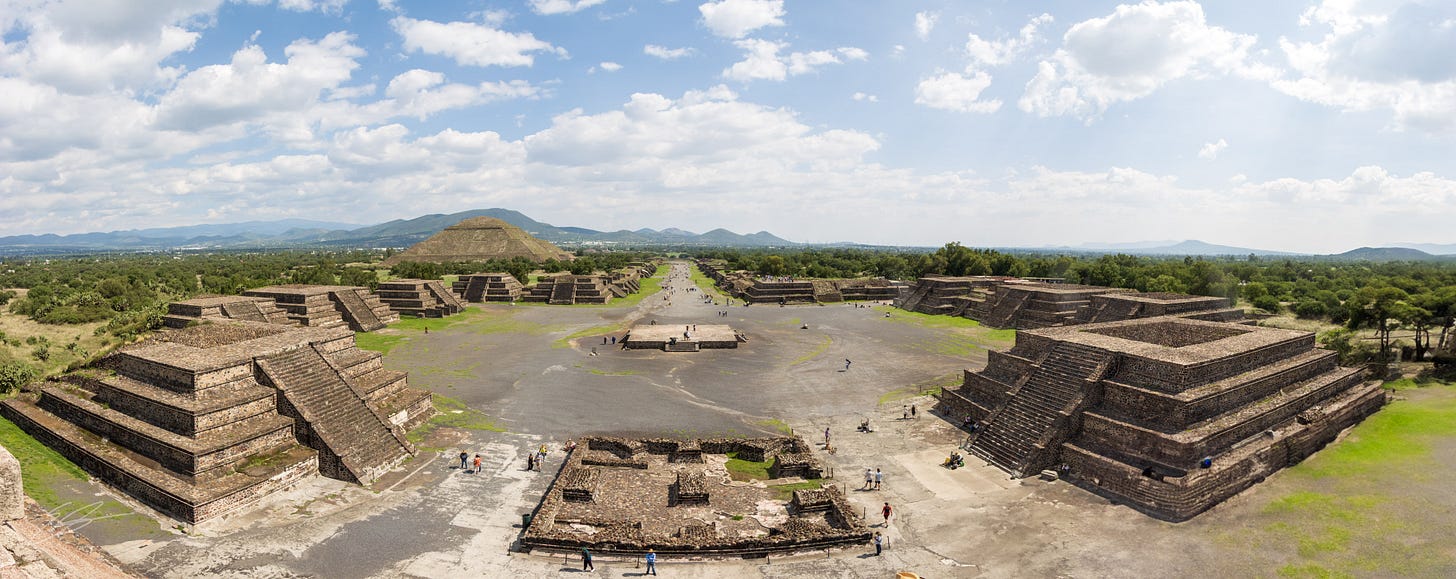
Thank you for this.I think it is about having the courage to follow our imagination. To pick up our mat and walk.
What an awesome experience. I hope that it is all you expected and planned for. Buen viaje, Ed.